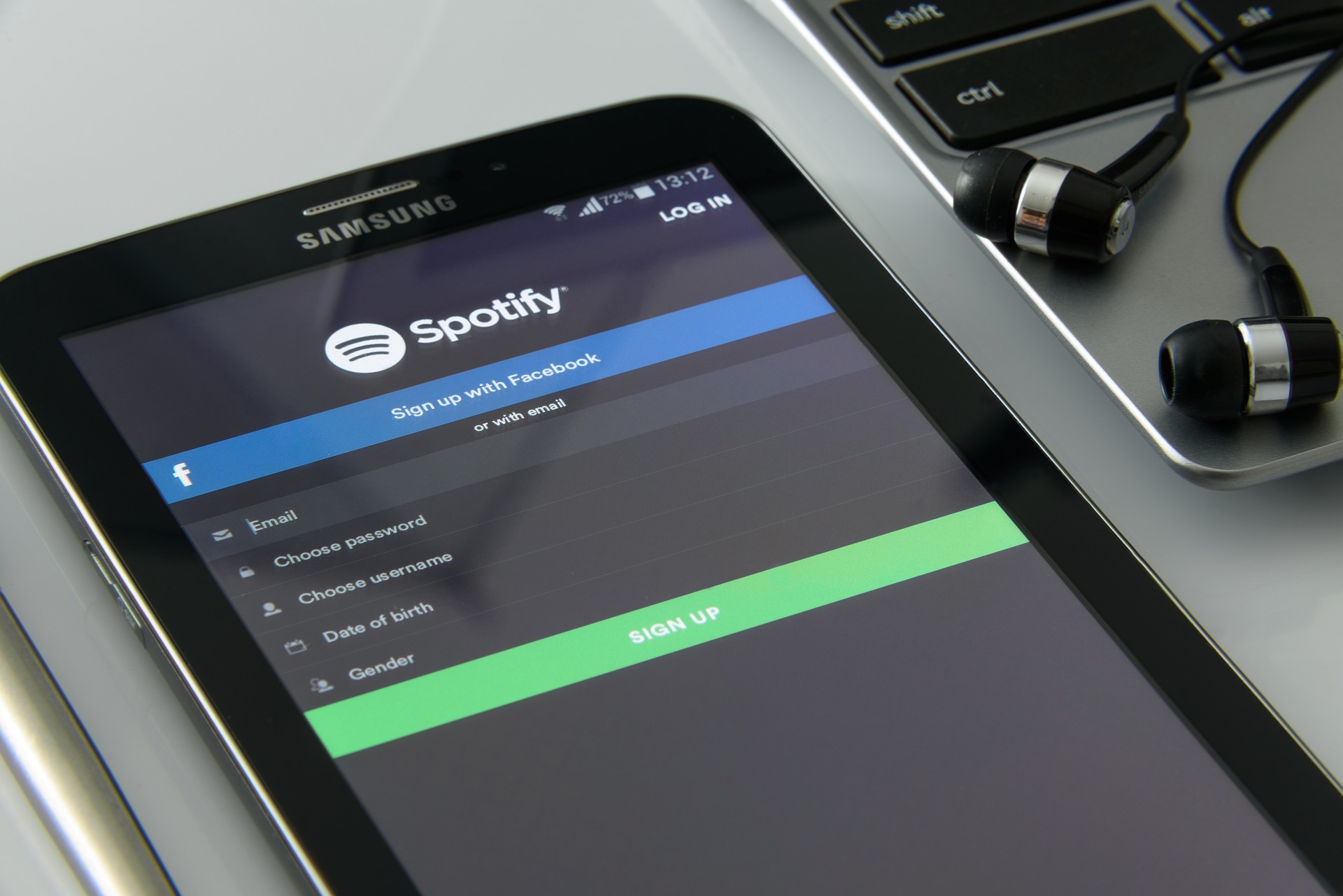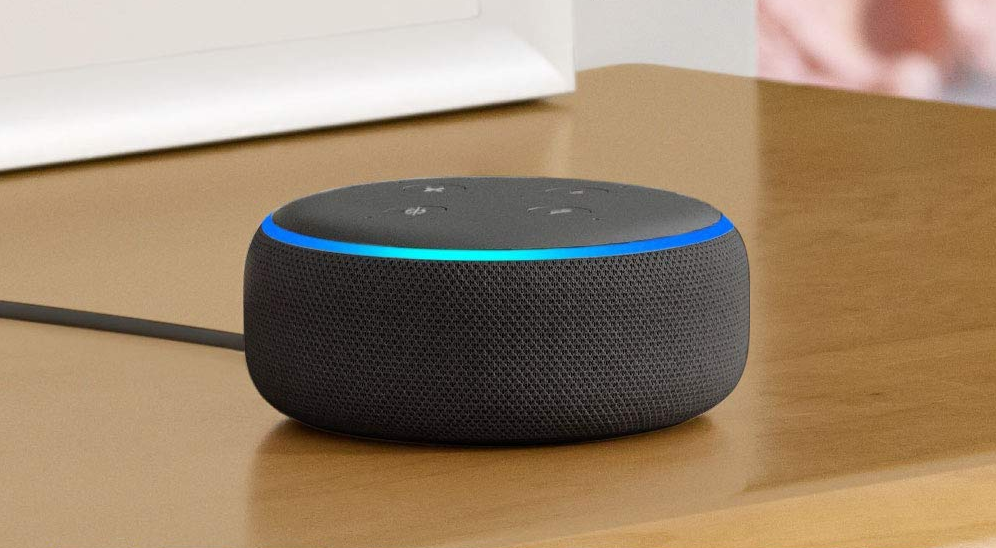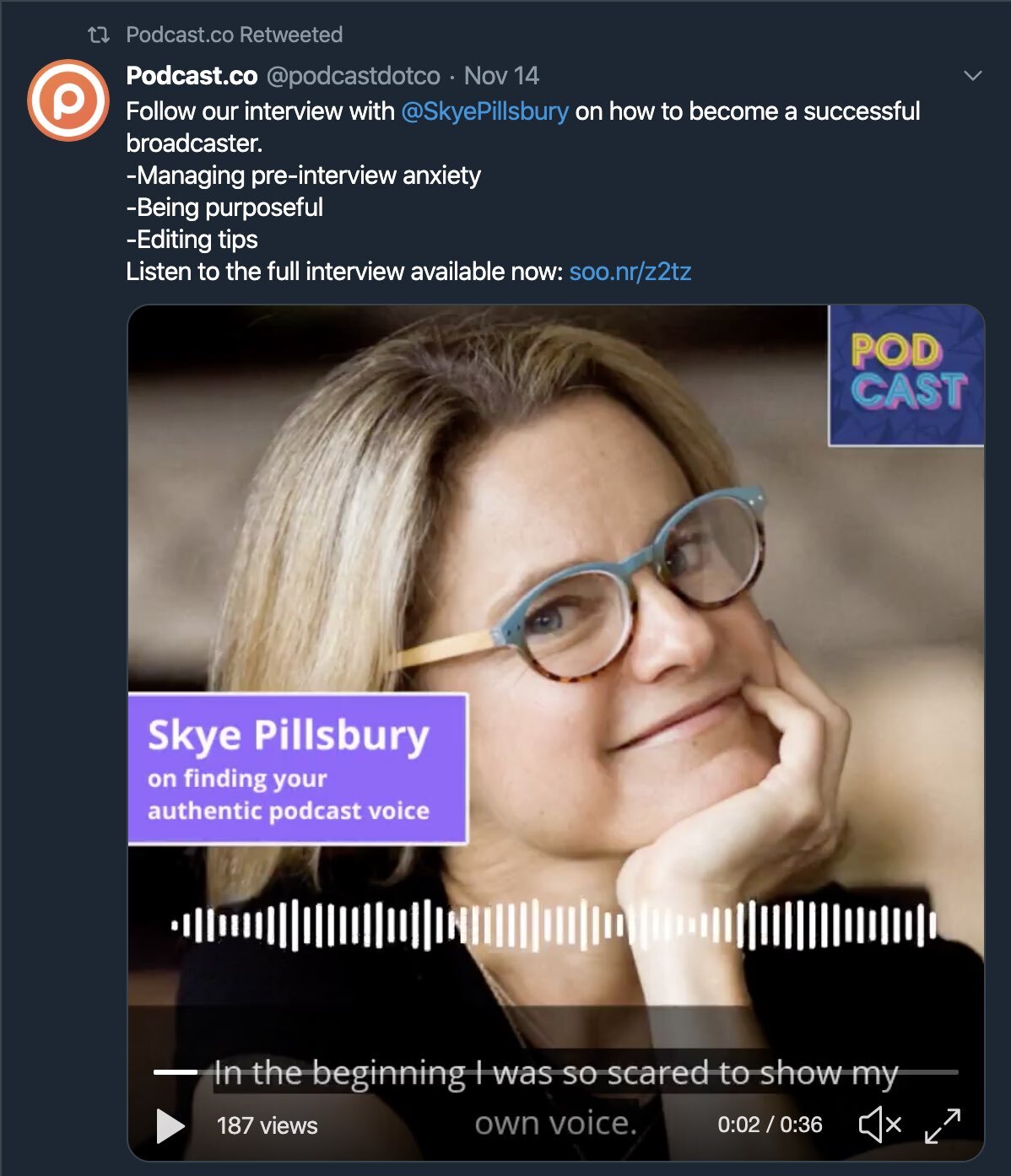Why Your Business Needs an Audio Content Strategy
Creating audio content can no longer be considered an optional extra. It should play a central role in any forward-thinking marketing strategy.
The rise of audio content will be like the blogging revolution - but faster.
Lots of brands are already dipping their toe in the water, from audiobooks and Alexa Skills to podcasts and voice SEO. And as audience figures grow, this trend is set to continue.
Businesses that still consider audio content as an optional “nice-to-have” risk falling behind the curve. So if you haven’t already started thinking about audio-specific content marketing, now’s the time to start.
In this article we’ll explore the factors driving the growth of audio, how audio content can boost on-page SEO performance, how to quickly repurpose audio into social media videos, and why businesses need to focus on creating quality over quantity.
Digital Audio Content is Booming

Digital consumption of audio is growing rapidly. More than half of audio content will be streamed on-demand by 2020. This indicates an ongoing change in listener preferences. People are consuming more audio content than ever before, but they’re less likely to get it through traditional radio broadcasting.
Podcasting had been one of the main factors driving this evolution and the growing audience figures haven’t gone unnoticed by marketers and advertisers. The IAB reports that digital audio ad revenues topped $1.6 billion in 2017, a 39 percent increase over 2016.
It’s clear that more and more companies are catching on the fact that audio offers a uniquely intimate atmosphere where people can connect with brands. And it’s always available even when text and video aren't.
To read something, you need to sit still and focus attentively. Watching videos takes less concentration, but you still need to be still. In contrast, audio can be easily consumed while multitasking - during a commute, in the gym, while doing housework, or even in bed at night.
These days, everyone is pressed for time. Most of us don’t have the luxury of setting aside a couple of hours each day to read blogs and watch videos. By creating an audio content strategy, you’ll make it easier for your audience to fit you into their schedule and familiarise themselves with your brand and what you’re all about.
Why Audio Consumption Will Continue to Increase
Looking ahead, the future looks bright for audio. The rise of smartphones, 4G, and streaming services have made on-demand listening easier than ever before.
On top of that, voice-assistants and smart speakers are already facilitating a new area of listener growth. By 2022, Juniper Research predicts in the US alone there will be more than 900 million voice enabled devices in use - a 95% increase over today.

These smart and interactive tools change the whole dynamic of the listening experience. Tom Webster, Vice President of Edison Research noted:
“Smart speakers provide an unobtrusive way for entertainment and technology to be used without having to be focused on a phone or earbuds that shut you out of society."
Early adopters in the business world are already finding ways to use smart speakers to connect with new audiences. For example, at Podcast.co we recently set up our own daily Alexa flash briefing which gives a rundown of all the latest podcast headlines. Since it’s October 2019 launch, our listener base has been growing steadily.
Following smart speakers, the next area of predicted listener growth is connected cars. The commute is the last remaining stronghold of traditional radio. But as internet-connected cars become commonplace, listening to podcasts will be just as convenient as switching on the radio. This is likely to cause another big spike in the consumption of on-demand audio content.
How Audio Can Boost On-Page SEO Performance
Humans have been listening for thousands of years. Long before the invention of reading and writing. So audio is the medium we’re most naturally wired for. It’s easy and effortless.
For that reason many people prefer to listen to content rather than read it (if you’re in any doubt, consider the meteoric rise of Audible). So if your content marketing strategy relies solely on blogging, you’re probably missing out. Written blogs are of course essential to drive SEO traffic, but it’s important to also consider the preferences of visitors who arrive at your website.
At Podcast.co we found time on page metrics for some of our most popular blog posts increased significantly when we added audio versions of the content to the top of the post. People are finding the articles through Google search, then choosing to listen rather than read.
If you’ve already written lots of blogs, recording them is an easy way to start building out your audio content strategy.
With the latest BERT update to their search algorithm, Google emphasised content creators should focus on delivering great on-page experiences for humans, not robots. Creating audio versions of your articles is one of the best ways to make your content more human-friendly.
And while Google can't index audio files just yet, this is something they are actively working on. When this functionality is rolled out, businesses with lots of pre-existing audio content will gain a significant advantage.
Audio Content vs Video Content
Again, video content is no doubt an important part of any marketing strategy. Especially when it comes to gaining traction on social media. But it can be quite labour intensive to create professional edits. And many people can find it difficult to present on camera in a natural way. It can be intimidating staring down the barrel of a lens!
It’s different with podcasting. For most people it feels normal. When you’re speaking into the mic it feels like you’re talking to one person. So it’s much easier to relax and present in a way that “flows” naturally. And coming across as real and authentic is one of the keys to attracting a loyal audience.
It’s also cheaper and easier to produce quality audio than it is to produce quality video. Most businesses are likely to have the resources they need to run a podcast. However, fewer will be placed to build a successful YouTube channel.
It’s also worth keeping in mind that audio can be easily repurposed into video. For example, Podcast.co’s audiogram tool allows you to convert the highlights from your episodes into eye-catching videos with animated captions. Audiograms stand out in social feeds and help funnel more listeners back to your full podcast episodes.

On the other hand, it usually takes a lot more work to convert video into compelling audio. When you strip away the visual component, some key elements of the messaging are often lost.
The Audio Market is Less Saturated
Audio content currently offers better cut-through than other media. There are 440 million blogs, 23 million YouTube channels, but only 750,000 podcasts. It’s much easier to be heard in a less saturated market.
But this situation won’t last forever. Competition is already beginning to heat up. Writing in Quartz, Molly Beck, founder of Messy.fm, claimed that if you want to start a podcast you have three years (at most) to do so. After that it will become extremely difficult to carve out a niche in the market.
Podcasting will be like the blogging revolution - but faster. Every company will have one, and many of the biggest ones will be updated daily. Nobody is going to tap you on the shoulder and tell you it’s time to launch a podcast. That comes from your desire to share your story with the world. So, don’t wait. If you start your podcast three years from now, it’ll be way too late.
Fortunately, getting started is easy. The growth of the industry has given rise to lots of new equipment, platforms and services, like Podcast.co, that have been designed specifically to make launching and growing a podcast as easy as it can be.
Focus on Quality, Not Quantity
With all that said, you can’t simply churn out sub-par audio content and expect it to reach millions of listeners. But as businesses rush to get into audio, it’s giving rise to lots of slapdash, half-baked productions nobody actually wants to listen to. A 40 minute episode detailing all the ins and outs of your latest product feature? No thanks.
There’s no way listeners can consume all of the content out there today. So quite naturally, audiences will gravitate towards things that sound great and are compelling. And they’re going to shy away from content creators who aren't focused on the craft of producing great audio.
As a business, it’s important to think carefully about who your ideal listener is in order to create audio that speaks directly to them. You need to offer solutions and solve their pain points in an entertaining way. You need to give them a real incentive to tune in on a regular basis.
Remember, you can only extract value from your audio content strategy by giving away lots of value first. So when your listeners do have a need for the product or service you’re offering, they’ll come straight to you.









